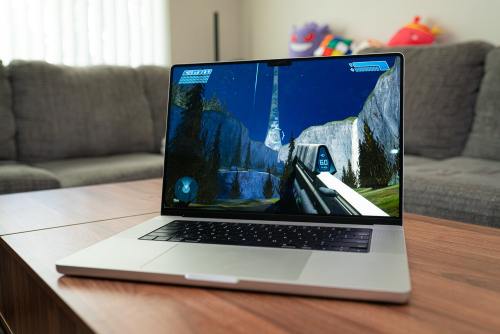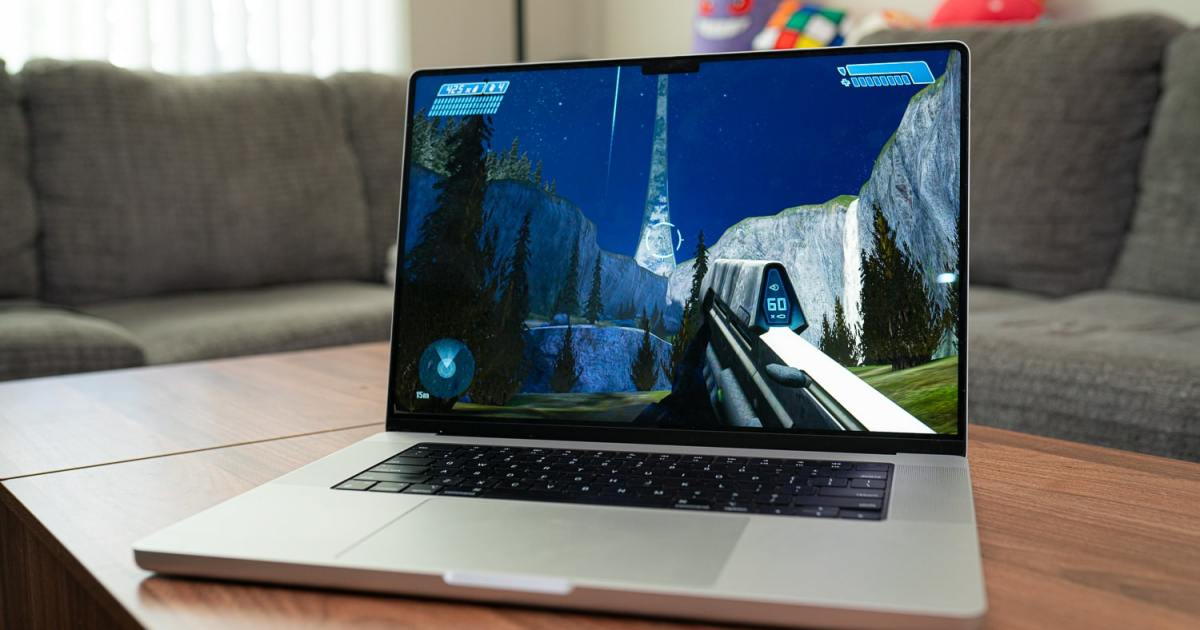
While many of Apple’s laptop rivals have embraced OLED screens, Apple has stuck firmly with mini-LED in its MacBook Pro — and the results have been spectacular. As we said when we reviewed the M3 Max MacBook Pro, it has the best display out of any laptop, bar none.
Yet there whispers that Apple is working on something even better: its own brand of OLED display that could take the MacBook Pro to the next level. It’s still early days, and there are all sorts of different rumors flying about, but it seems that something big is definitely in the works.
To bring you up to speed, we’ve scoured the rumor mill for all the latest happenings. We’ve put everything together in this guide, so by the end of it you should be well informed about the OLED MacBook Pro. Here’s everything we know so far.
Price and release date speculation
Right now, there’s a lot of uncertainty surrounding the OLED MacBook Pro’s future asking price, but we can use the past as a guide. For example, when Apple revamped the MacBook Pro with 14-inch and 16-inch mini-LED panels in 2021, it bumped the price up by $100. Having said that, though, this update also brought a raft of new features, including new Apple silicon chips and the notch-ified display.
This time, if Apple just upgrades the screen to OLED and keeps everything else the same, the price might not change. If, however, it takes the opportunity for a more wide-ranging overhaul, don’t be surprised if the price increases slightly.
And when might we see all this? Well, that’s equally up in the air. There are currently several possible release dates. According to Korean outlet ETNews, Apple will launch an OLED 16-inch MacBook Pro in 2025, then follow it up with a 14-inch version the year after. Industry analysts Omdia, however, think both models will move to OLED in 2026.
But those aren’t the only people making predictions. Well-known analyst Ross Young has said Apple plans to launch OLED MacBook Pros in 2026 or 2027, while news site The Elec believes 2027 is the date to keep an eye on. But just to make things even more complicated, The Elec’s report focuses on when one particular supplier will be able to provide OLED panels to Apple — it could be that other suppliers (and thus the MacBook Pro itself) are ready before then.
With Apple, it’s usually best to take a cautious approach when it comes to release dates. The company prefers to wait a little longer and get a product right rather than rushing to market with a half-baked and unfinished device. With that in mind, a launch date closer to 2026 or 2027 feels like a safer bet.
Design and features
Given how long we’ll probably have to wait until we see the first OLED MacBook Pro, it’s difficult to predict its design with much confidence. Apple last redesigned the MacBook Pro in 2021, so by 2026 or 2027 it might feel that an overhaul is in order. Perhaps then it will finally be able to shed the notch and put the Face ID camera system under the display, but that’s just speculation for now.
We can be more certain when it comes to what the OLED panels will bring. Compared to mini-LED, OLED offers improved brightness, contrast, color accuracy, and battery life, which are all things that would appeal to the MacBook Pro’s target audience.
But since this is Apple we’re talking about, the company will probably want to have a few high-end extras built in to entice potential buyers. And on that note, Young has claimed that Apple’s first OLED panels will come with several world firsts to brag about. Specifically, he thinks they’ll be the “first OLED tablets with LTPO, first OLED tablets with a tandem stack, brightest and longest life OLEDs in tablets, lightest and thinnest OLEDs in tablets as well due to glass thinning and TFE.”
Cutting through the jargon and acronyms, Young’s post essentially means he thinks Apple’s OLED displays will be very efficient on battery life while boasting excellent brightness, all wrapped up in a thin and light panel. While he was discussing OLED panels specifically relating to the iPad Pro, we wouldn’t be surprised to see similar tech make it to the MacBook Pro.
And there’s more. Bloomberg journalist Mark Gurman has predicted that Apple could launch a touchscreen MacBook as soon as 2025. If that proves to be true, we can easily see Apple adding that tech to the OLED MacBook Pro when it debuts a couple of years later.
What about the chip powering all of this? That’s harder to predict, but we can make an educated guess. There are reports that Apple wants to switch its Macs to an annual upgrade cycle, potentially starting this year. If so, the OLED MacBook Pro could come with an M6- or M7-series chip if it is released in 2026 or 2027, respectively.
What else will get an OLED display?
Judging by the rumors, Apple isn’t planning on limiting its OLED panels to the MacBook Pro. In fact, it could be about to build them into almost every device it makes. While iPhones have had OLED screens for years, most of Apple’s other devices could soon join them.
At the moment, there are two main outlines for Apple’s future roadmap, with one coming from ETNews and the other from Omdia. Starting with ETNews, the outlet believes we’ll see the following OLED schedule come to pass:
- iPad Pro in 2024
- 16-inch MacBook Pro in 2025
- 14-inch MacBook Pro, 13-inch and 15-inch MacBook Air, 11-inch iPad Air and 8.7-inch iPad mini in 2026
- 12.9-inch iPad Air, upgraded iPad Pro in 2027
Omdia, meanwhile, has published an alternative timeline:
- iPad Pro in 2024
- 14-inch and 16-inch MacBook Pro and 11-inch iPad Air in 2026
- 13-inch and 15-inch MacBook Air, upgraded iPad Pro, iPad mini, foldable 20-inch iPad Pro and two standalone displays (32-inch and 42-inch) in 2027
Omdia has previously published a report claiming that Apple is working on an OLED iMac in three sizes: 27 inches, 32 inches, and 42 inches, which are all apparently scheduled for 2027. However, it’s not clear if the latter two are the same devices as the 32-inch and 42-inch standalone OLED displays Omdia has also claimed are coming that year.
Regardless, while the two sources agree on some points, there are also some notable points of difference. What they both believe, though, is that OLED is coming to future Apple products, and in a big way.
Editors’ Recommendations

Wanda Parisien is a computing expert who navigates the vast landscape of hardware and software. With a focus on computer technology, software development, and industry trends, Wanda delivers informative content, tutorials, and analyses to keep readers updated on the latest in the world of computing.


